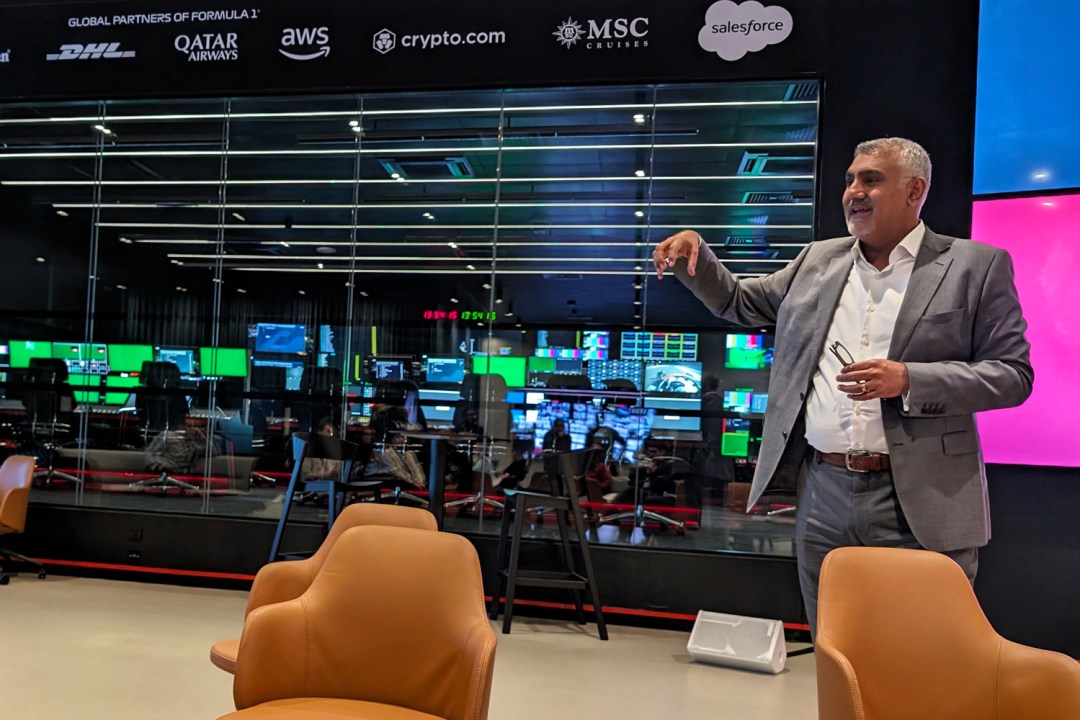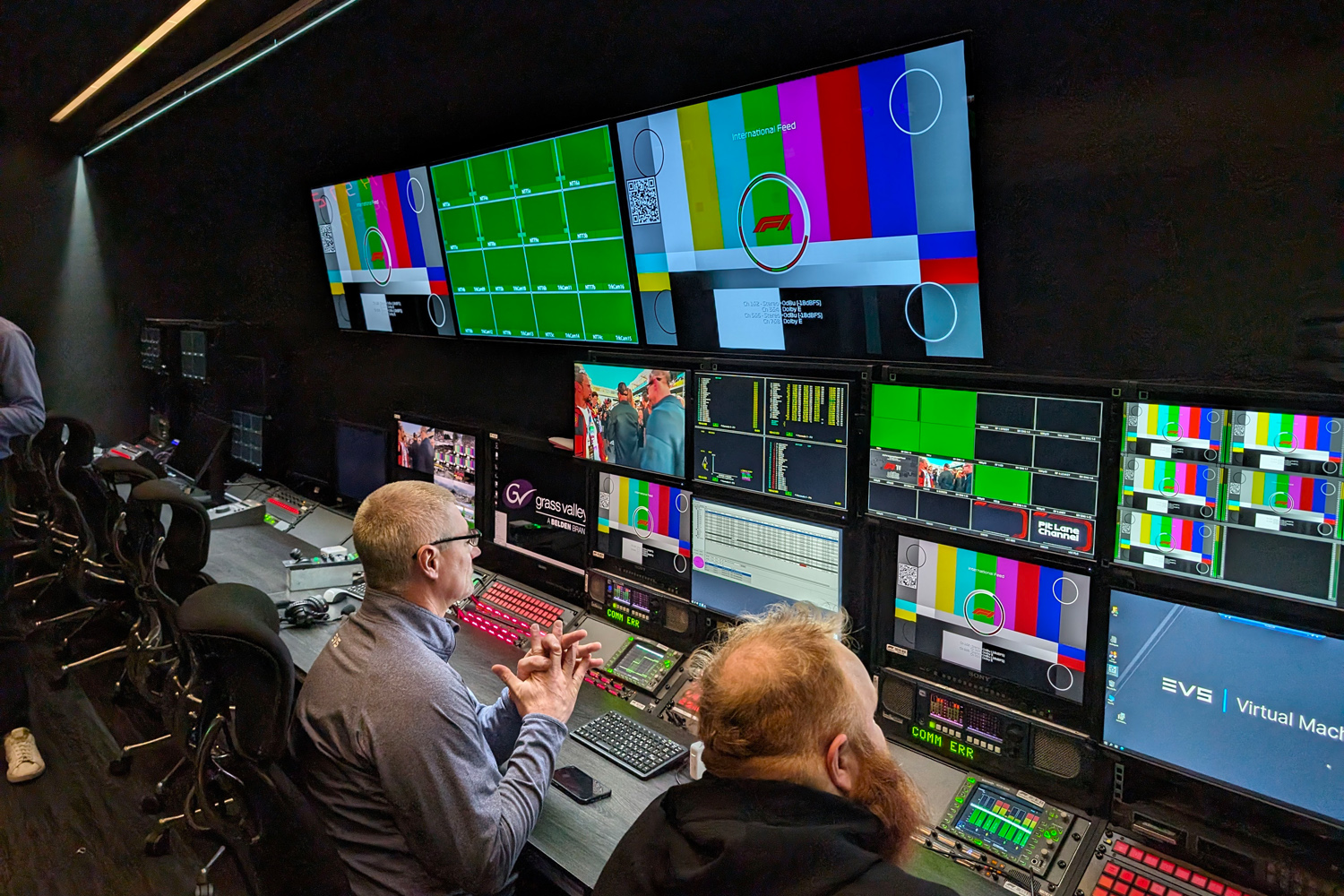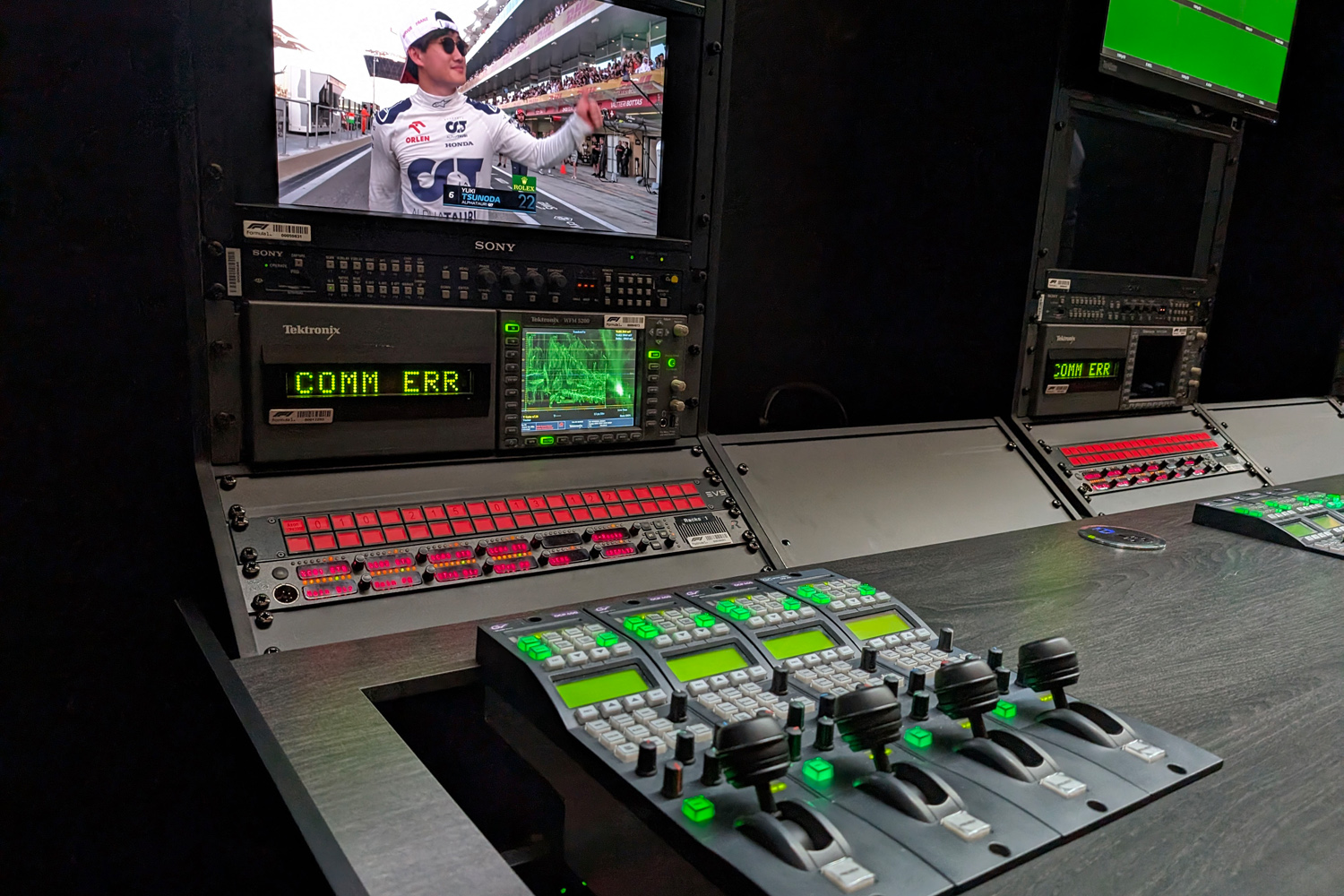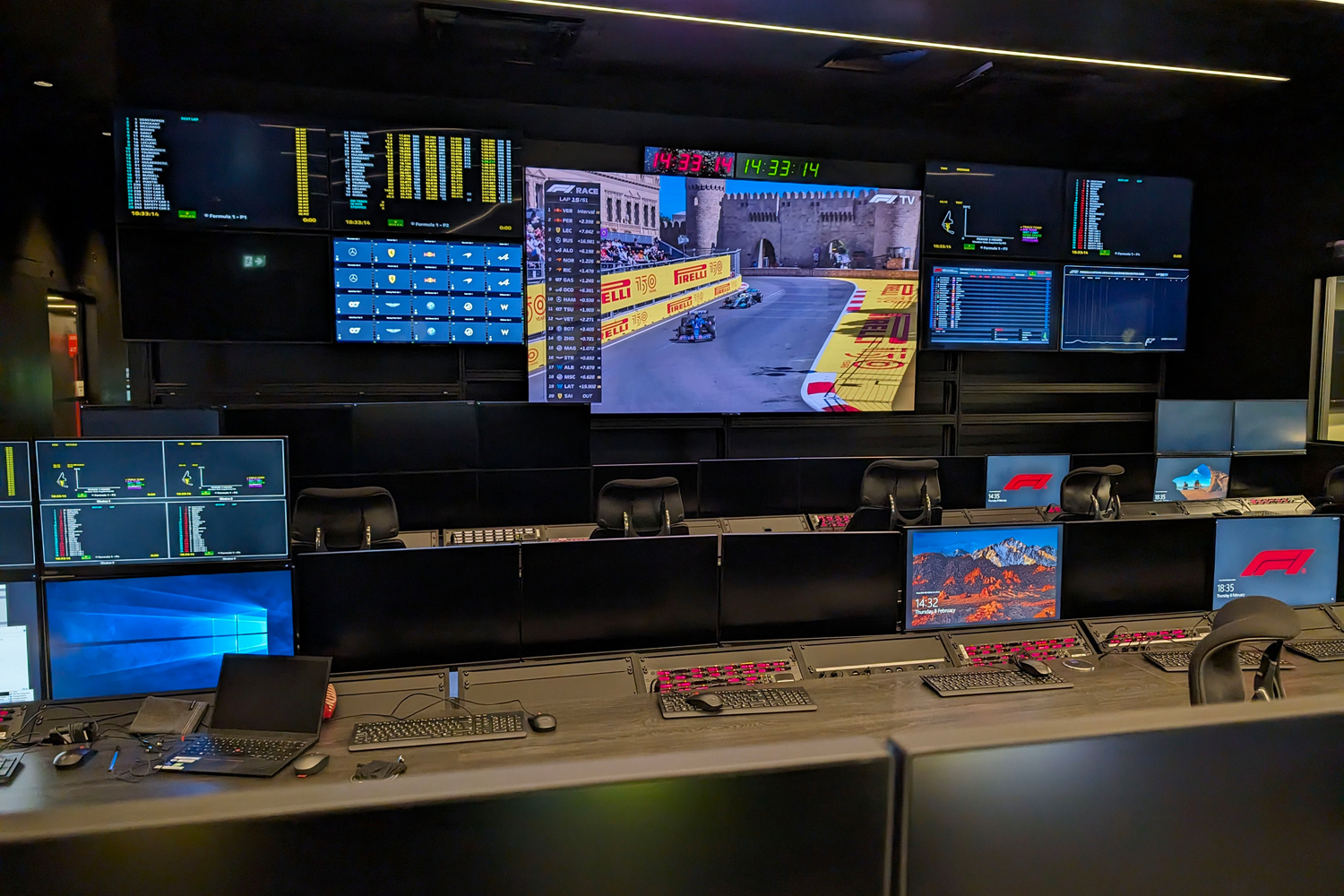Stuff meets… F1 Director Of Innovation Pete Samara
We walk tech, the Netflix effect and how a former hangar in Bromley broadcasts to 1.5bn people

Formula One isn’t just the pinnacle of motorsport; it’s also the world’s largest remote broadcast, with every moment of fast-paced footage being beamed to more than 1.5 billion people across the length of a season. Some 58km of fibre optics, data antennae and timing loops accurate to 1/10000th of a second are laid five full days before lights out. Hundreds of cameras and microphones see almost every inch of circuit, with the footage piped down twin 10Gbit fibre pipelines to be edited and editorialised before it hits your screens.
It takes a crew of over 300 to make it happen, but not everyone is track-side. F1’s Media and Technology Centre in Biggin Hill, just down the road from glamorous Bromley, houses 140 directors, production engineers and editors (plus a whole bunch of hardware supplied by Lenovo) that decide what makes it to air every race weekend. They listen to every team radio (sometimes all at once), make thousands of camera cuts and create compelling yet easily digestible stories out of the on-track battles.
Director Of Innovation and Digital Technology Pete Samara oversees the hardware that makes it all possible. We spoke to him ahead of the start of the 2024 season to find out why F1 and tech go hand-in-hand.
The Media & Tech Centre is much more than just a broadcast studio.
The M&TC produces the world feed – that’s footage, audio, graphics – and provides it to the teams and FIA as a service. The start light system is designed and built by M&TC. The paddock club pass system is M&TC. If the telemetry systems aren’t reporting or team radio isn’t being sent or received by us, the cars won’t leave the garage.
Previously this was all done on the road. The operation got split post-COVID because of sheer volume of races. In three months did what we thought would take three years. We’re now in year two of operation, and the M&TC is still being completed in places.



We explore everything – not just the things you see at home.
Every race we’ll be exploring something new, but it’ll only be visible when we think it’s good enough. Once you show new things you need to be comfortable they’re at the quality Formula One wants.
The helmet camera was an example of us trying something out; it got traction, we liked it and then we put it on more cars. Now more drivers have a helmet camera – but we didn’t do that day one.
We want to make sure we’re using technology in the appropriate way. Whether that’s 3D, 360, virtual reality, extended reality… if and when the time is right, and when the demand is there.
One of our jobs is “how do we simplify all that information”?
Year on year we evaluate our graphics and look at the data output, so we can feed the people who really want that data. But the international feed has to be a global product, so you see a lot of simplification there. It’s talking in people’s language, explaining what DRS is and not assuming people know what the acronym means. If you start making that a bit more touchable by people, I think it makes it more accessible to the general public.
For us it’s about making sure the product teams, creative, graphic, whoever it might be, are all focused on trying to give the right narrative on every channel.
Netflix is one of many things that changed F1 over the last five years.
We try to make sure the fan experience is utmost. How do I keep a person that really wants to understand the tyre strategy, to someone who just wants to know who’s winning? What we’ve done over the last five, six years is have different social media channels – Instagram, Snapchat, YouTube – to give access to fans on a platform they want to see it on.
We tune our products to listen to what people want. Netflix is another one of those listening tools.



You don’t have to be a super-fan to work here…
I think you need a balance of people. In creative roles you absolutely want people who are passionate about what they’re doing, because they’re hooked into every detail of the output. I’m a tech first kind of guy, but only when it brings some goodness for the business. I’m not an F1 fanatic at all. I love working in sports, but I’m all about the challenge.
…but I do still have a favourite track.
Honestly, they’re all great. Nearly year, I have a new favourite. Spectacle-wise, Las Vegas was definitely something. Singapore, though. I think has just got a little bit of everything, some great elements to it.
